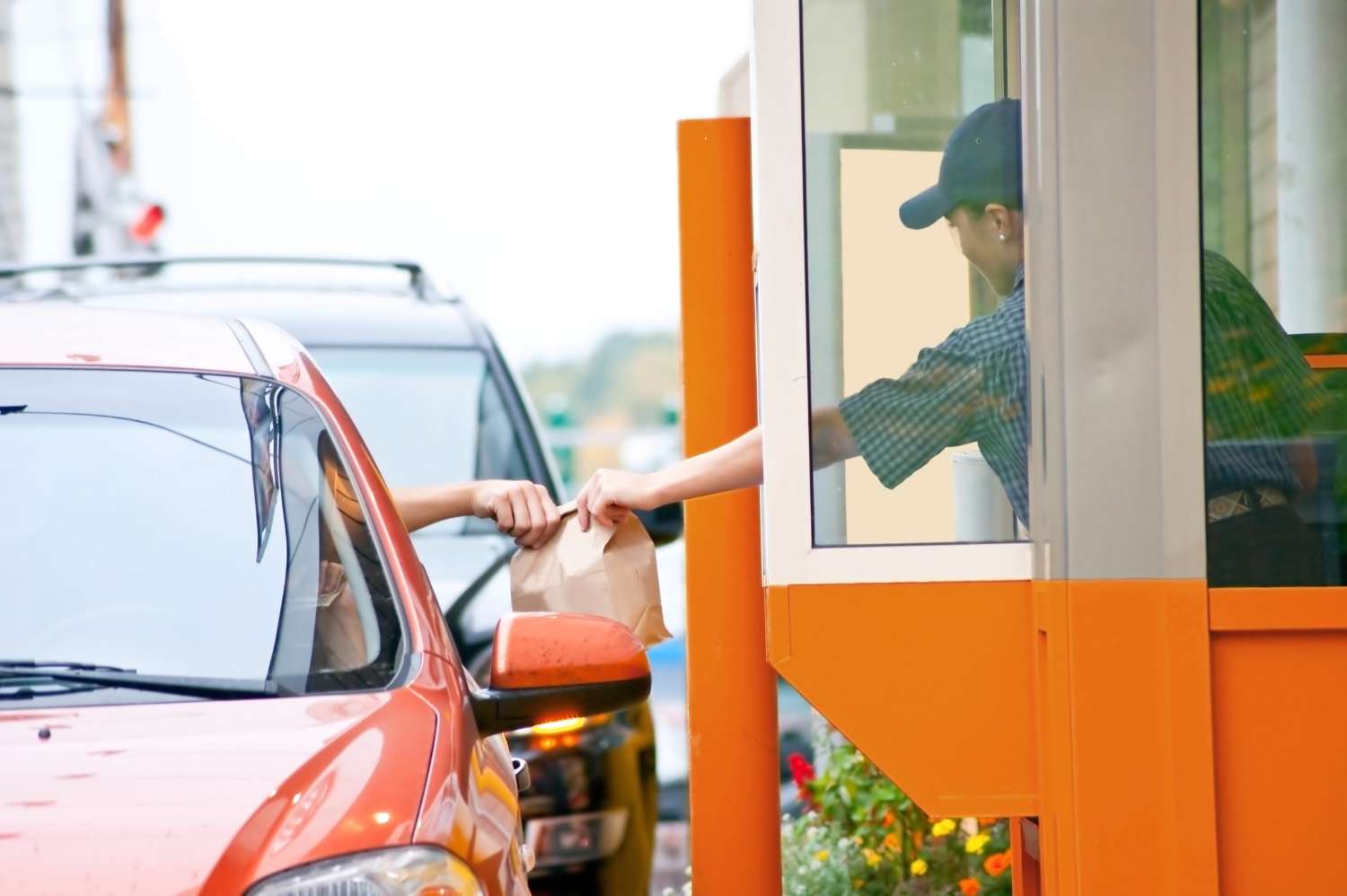Drive Thru Vehicle Detection and Monitoring
Improve Customer Experience and Maximize Profits
Drive thru applications require reliable vehicle detection to alert employees to a customer’s presence at a window, count the number of cars passing through, monitor time spent in the drive thru, and more.
By increasing efficiency and facilitating a better customer experiece, vehicle detection solutions not only save costs but also maximize revenue.
Inductive loops have traditionally been a common vehicle detection technology for drive thru applications. However, inductive loop systems require large sections of pavement or brickwork to be damaged and removed for installation and repairs, which can lead to lengthy downtime.
Radar is another technology that can be used for drive thru vehicle detection. Radar sensors are immune to weather conditions, making it an excellent option for outdoor deployments at drive thru businesses.
Wireless magnetometers are an excellent choice when wired technology is impractical. Wireless magnetometers can be installed above or below grade, and even below grade installations are minimally invasive, requiring only a small 3-inch diameter hole in the concrete for each sensor location.
Keep reading to learn how these technologies solve common drive thru vehicle detection challenges; or contact an engineer to discuss your specific application.




Vehicle Detection at a Quick Serve Restaurant
Fast food restaurants rely heavily on their drive-thru service, and they earn much of their revenue from drive-thru sales. Streamlining the drive-thru process in quick serve restaurants (QSR) can increase revenue and improve customer satisfaction.
By combining wireless vehicle detection sensors with an analytical software platform, restaurants can track the speed of service and compare drive-thru times at multiple locations. This visibility enables managers to identify where bottlenecks occur, and it allows stores to compete to improve their drive-thru service.
Vehicle Detection at a Bank Drive Thru
In applications where staff may be away from the drive thru window for periods of time, a vehicle detection solution can be used to alert staff when a customer is present. For example, bank tellers working the drive-up windows must be aware when a vehicle is present in order to optimize customer service.
Radar sensors use Frequency Modulated Continuous Wave Radar (FMCW) to detect both stationary and moving vehicles. In the application pictured to the right, a radar sensor is mounted to the drive-through overhang and is configured to detect the pavement.
When a vehicle blocks the beam, the sensor’s output switches and a signal is sent to the bank workers, alerting them of the presence of the vehicle to ensure timely service and minimal wait times for customers.
Vehicle Detection and Counting at a Drive Thru
In addition to triggering a signal that a customer is present, radar sensors can also be used to count the number of vehicles that pass through the drive thru each day. This provides valuable information on peak drive thru days and times to facilitate data-driven staffing decisions.
The radar sensor's vehicle detection, business indication, and count functions help restaurants efficiently respond to drive-thru customers, measure drive-thru demand, and manage drive-thru operations.
Wireless Magnetometers for Vehicle Detection
Der M-GAGE-Sensor verwendet eine passive Sensortechnologie zur Erfassung großer Eisenobjekte, zum Beispiel Autos. Der M-GAGE-Sensor bietet eine Alternative für Induktionsschleifensysteme und benötigt kein externes Controllergehäuse.
- Hält die Auswirkungen von Temperaturänderungen und wechselnden Magnetfeldern minimal
- Sensor lernt die Umgebungsbedingungen und speichert Einstellungen in einem nicht flüchtigen Speicher
- FlexPower-Technologie, die von einer im Gehäuse integrierten, einzelnen Primärbatterie mit Strom versorgt wird
- Sender-Empfänger bieten Zweiwege-Kommunikation zwischen Gateway und Knoten, einschließlich Datenübertragung mit Empfangsbestätigung
- Vollvergossenes, versiegeltes Gehäuse enthält eine Stromquelle, einen Sensor und eine Antenne für eine vollständig drahtlose Lösung
Wireless Controller
Die industriellen Funkkontroller der Bauform DXM ermöglichen Anwendungen mit Ethernet-Konnektivität und Industriellem Internet der Dinge (IIoT).
- ISM-Funksysteme mit 900 MHz und 2,4 GHz für lokales Funknetz verfügbar
- Konvertiert Modbus RTU in Modbus TCP/IP oder Ethernet I/P
- Logikkontroller kann mit Aktionsregeln und Textsprachmethoden programmiert werden
- Micro-SD-Karte zur Datenprotokollierung
- E-Mail- und Textbenachrichtigungen
- Funkmodem für Funkkonnektivität
Radar Sensor
Hochempfindliche Radarsensoren, ideal zur Vermeidung von Kollisionen bei vom Fahrer bedienten ortsbeweglichen Ausrüstungen wie Greifstaplern, Gabelstaplern und Bergwerksfahrzeugen.
- Moduliertes True-Presence-Dauerstrichradargerät (FMCW) der vierten Generation erkennt bewegliche und unbewegliche Objekte
- Höhere Empfindlichkeit und größere Reichweite
- Einstellbares Erfassungsfeld – ignoriert Objekte jenseits des Einstellungspunktes
- Einfache Einrichtung und Konfiguration von Bereich, Empfindlichkeit und Ausgang mit unkomplizierten DIP-Schaltern
- Die Erfassungsfunktionen sind unempfindlich gegen Wind, Regenfälle oder Schnee, Nebel, Feuchtigkeit, hohe/niedrige Lufttemperaturen oder Sonneneinstrahlung
- Der Sensor kommuniziert im ISM-Frequenzbereich (Industrie, Wissenschaft und Medizin); keine Sonderlizenz erforderlich
- Robustes Gehäuse mit Schutzart IP67 hält rauen Einsatzumgebungen stand.













